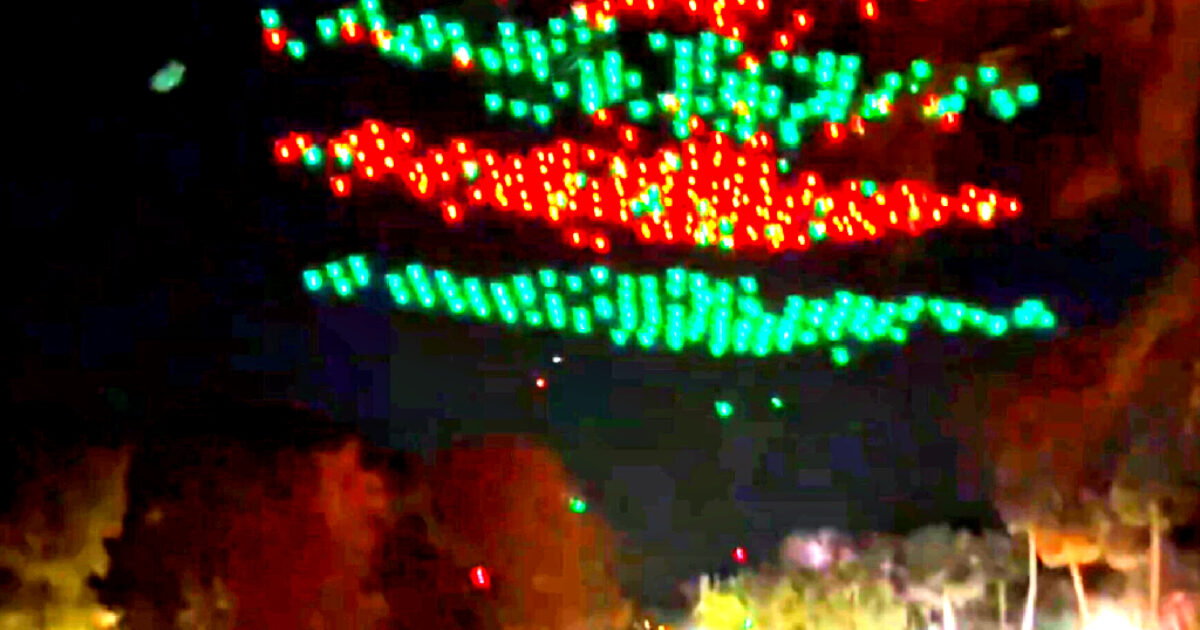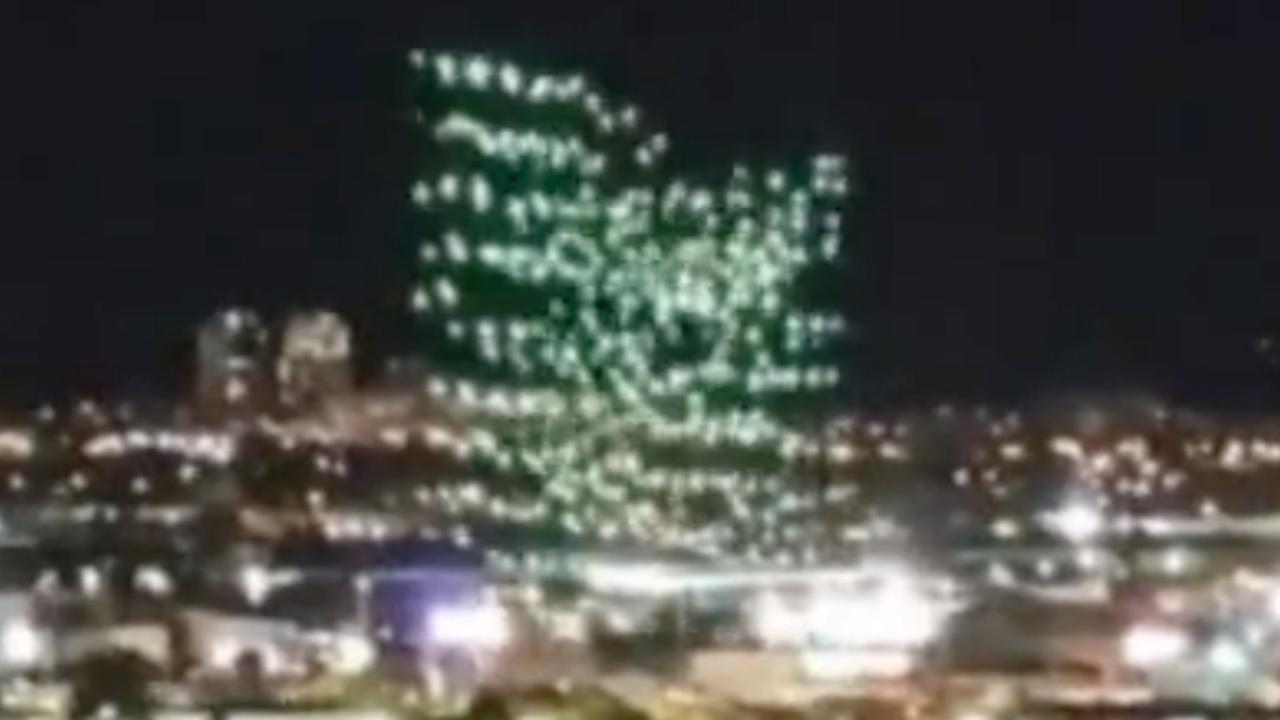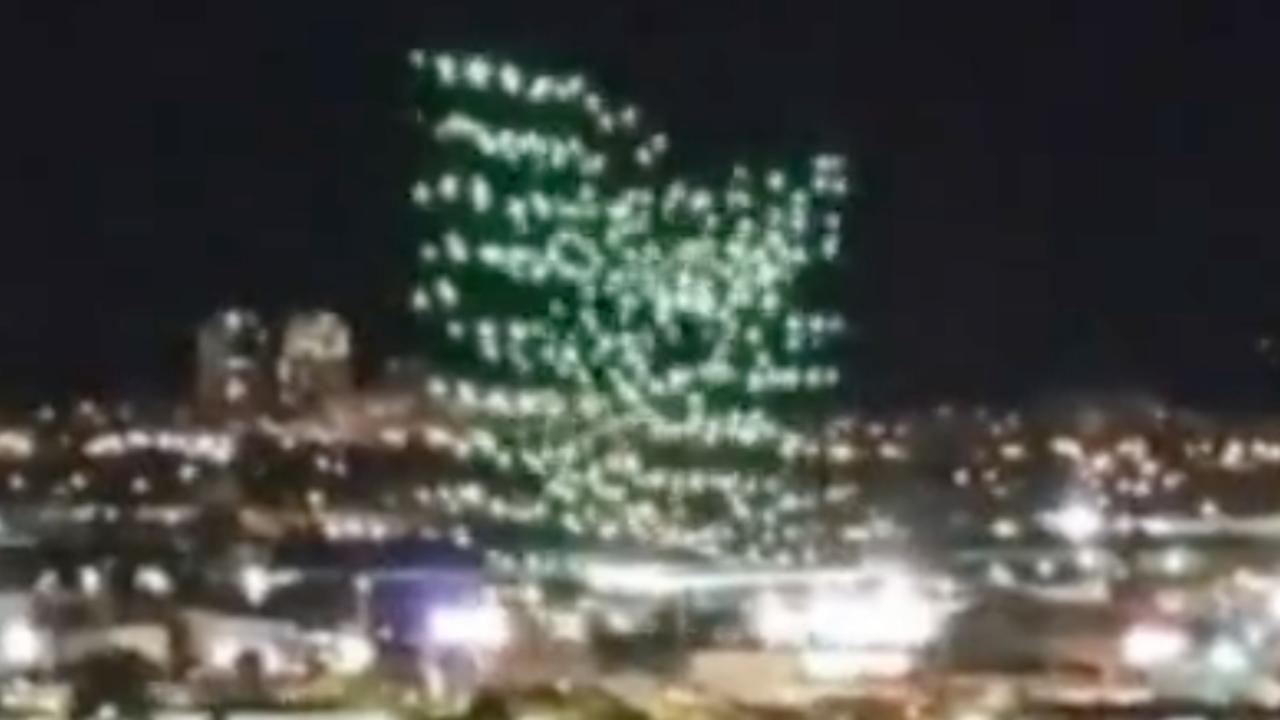Orlando drone show malfunction: A spectacular light show turned chaotic when a swarm of drones experienced a catastrophic failure. This incident highlights the complex interplay of technology, weather, human error, and regulation in the rapidly evolving world of drone displays. We’ll explore the technical glitches, safety protocols, and aftermath, examining what went wrong and how future incidents might be prevented.
From the initial malfunction to the subsequent investigation and public reaction, we’ll unravel the events surrounding this significant incident. We’ll delve into potential causes, ranging from software bugs and GPS interference to human error and unforeseen weather conditions. This analysis will also consider the broader implications for drone show safety and regulation.
Orlando Drone Show Malfunction: A Detailed Analysis
A recent drone show in Orlando experienced a malfunction, raising concerns about safety protocols and technological advancements in the field of drone light shows. This article delves into the specifics of the incident, exploring potential causes, examining safety regulations, and proposing improvements for future drone shows.
Incident Overview, Orlando drone show malfunction

The Orlando drone show malfunction occurred on [Insert Date] at approximately [Insert Time] at [Insert Location]. The show involved [Insert Number] drones, each weighing approximately [Insert Weight] and equipped with [Insert Specifications, e.g., LED lights, GPS modules, etc.]. A significant portion of the drones experienced simultaneous malfunctions, resulting in [Describe the malfunction, e.g., uncontrolled descent, erratic flight patterns].
The show was immediately halted, and emergency procedures were initiated.
The timeline of events suggests that [Describe timeline, e.g., the show began without incident, after 15 minutes a group of drones began to deviate, within 2 minutes most of the drones were out of control].
Causes of Malfunction
Several factors could have contributed to the drone show malfunction. Potential technical failures include GPS signal interference, software glitches in the central control system, or even individual drone hardware failures (e.g., motor malfunctions, battery issues). Adverse weather conditions, such as [Insert weather conditions, e.g., strong winds, unexpected rain], might have also played a role, affecting the drones’ stability and GPS accuracy.
Human error, including pilot error in handling the control system, inadequate pre-flight checks, or insufficient maintenance of the drones, cannot be ruled out.
Comparing this incident to similar past drone show malfunctions reveals recurring themes.
| Date | Location | Cause | Outcome |
|---|---|---|---|
| [Date of Incident 1] | [Location of Incident 1] | [Cause of Incident 1, e.g., Software Glitch] | [Outcome of Incident 1, e.g., Minor Damage, Show Cancelled] |
| [Date of Incident 2] | [Location of Incident 2] | [Cause of Incident 2, e.g., GPS Interference] | [Outcome of Incident 2, e.g., Several Drones Damaged, Show Delayed] |
| [Date of Incident 3] | [Location of Incident 3] | [Cause of Incident 3, e.g., Human Error] | [Outcome of Incident 3, e.g., No Injuries, Show Rescheduled] |
Safety Protocols and Regulations

Robust safety protocols are essential for drone shows. These should include comprehensive pre-flight checks, redundant control systems, real-time monitoring of drone performance, and well-defined emergency procedures. In Orlando, Florida, drone operations are governed by [Cite relevant FAA regulations and local ordinances]. FAA oversight plays a crucial role in ensuring compliance with these regulations, and any violations could lead to [Explain potential consequences, e.g., fines, suspension of operating permits].
- Implement redundant communication systems.
- Conduct rigorous pre-flight inspections of all drones.
- Develop detailed emergency protocols for various scenarios.
- Employ experienced and certified drone pilots.
- Utilize weather monitoring systems to adjust show schedules as needed.
Impact and Aftermath
The malfunction caused immediate disruption to the show, leading to [Describe the immediate impact, e.g., audience concern, show cancellation]. Fortunately, [Describe injuries and damages, e.g., no injuries were reported, some minor property damage occurred]. The incident received significant media attention, prompting discussions about drone show safety and regulations. The organizers responded by [Describe the steps taken to address the aftermath, e.g., issuing a public apology, conducting a thorough investigation, implementing improved safety measures].
Technological Improvements and Future Considerations
Several technological advancements can enhance drone show safety. Redundant control systems, improved communication protocols using multiple frequencies, and advanced safety features such as automatic landing mechanisms are crucial. Artificial intelligence and machine learning can play a significant role in real-time monitoring, predicting potential issues, and automatically adjusting flight parameters to prevent malfunctions. Enhanced training and certification programs for drone operators are also essential.
That Orlando drone show malfunction got me thinking about drone safety. It’s a reminder that even with advanced tech, things can go wrong, like that time a drone crashed in Paris – check out the details here: drone crash paris. The Paris incident highlights the importance of thorough testing and fail-safes, something clearly lacking in the Orlando show’s malfunction.
We need better safeguards for these increasingly popular displays.
A proposed improved drone control system might incorporate the following components:
Central Control Unit: This unit acts as the brain of the operation, processing flight plans, receiving real-time data from each drone, and issuing commands. It incorporates advanced algorithms for autonomous flight path correction and collision avoidance.
Redundant Communication Network: The system uses multiple communication channels (e.g., Wi-Fi, cellular, and dedicated radio frequencies) to ensure reliable communication even if one channel fails. This redundancy prevents communication dropouts that could lead to loss of control.
Individual Drone Units with Enhanced Sensors: Each drone is equipped with advanced sensors (e.g., LiDAR, IMU, and multiple GPS receivers) for precise positioning, obstacle detection, and self-diagnostic capabilities. This allows for immediate identification of potential malfunctions at the drone level.
That Orlando drone show malfunction was a real bummer, right? It makes you appreciate the planning that goes into these massive light shows. Check out this article about a florida drone show to see how things should go. Hopefully, they learned from the Orlando mishap and future shows will be flawless.
Emergency Landing System: An autonomous emergency landing system is incorporated, enabling each drone to safely land itself in case of communication failure or other critical malfunctions. This ensures the safety of both the audience and the equipment.
Epilogue: Orlando Drone Show Malfunction

The Orlando drone show malfunction serves as a stark reminder of the inherent risks involved in large-scale drone operations. While technological advancements offer breathtaking possibilities, robust safety protocols, stringent regulations, and continuous improvement in operator training are crucial to mitigating future incidents. By learning from this event, we can strive towards a future where drone shows are both spectacular and safe.
FAQ Summary
What type of drones were involved?
The specific model of drones used needs to be identified from the incident report. The answer will vary depending on the actual drones involved.
Were there any injuries reported?
That Orlando drone show malfunction? Yikes! It got me thinking about other times things went wrong, like that spectacular drone show crash I read about – total chaos! Thankfully, the Orlando incident seemed less severe, but it highlights how much can go wrong with these complex displays. It really makes you appreciate the amount of planning and precision these shows require.
This will depend on the specifics of the incident report. The answer could range from “no injuries” to details of specific injuries.
What was the total cost of the damage?
The financial impact, including repair costs and potential legal liabilities, is typically not immediately available after such an incident and would require further investigation.
What is the FAA’s role in investigating this incident?
The FAA likely investigated to determine if any regulations were violated and to potentially implement new safety measures. Details would be found in subsequent FAA reports.
